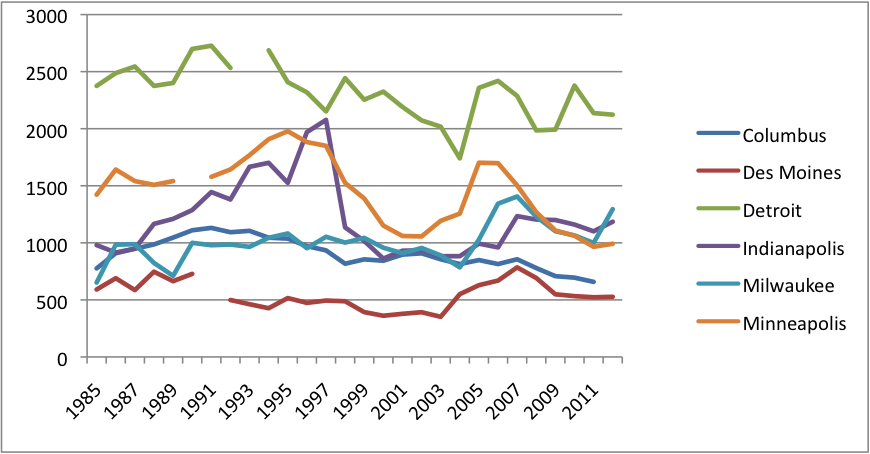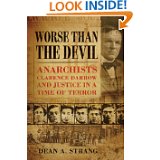In the first post in this series, I described overall violent crime trends in the seven Midwestern states since 1960. In all of the states except for Wisconsin, the basic story was identical: a dramatic spike in violent crime between the mid-1960s and the mid-1990s was followed by a subsequent drop in violence that was nearly as sharp as the increases had been. Wisconsin had the spike, but not the sustained drop of the other states.
In this post, I disaggregate the four categories of crime that go into the overall violence number. Doing so changes the story a bit, as we can see that aggravated assault was by far the biggest driver of the violence spike, and since then has remained stubbornly high. From the standpoint of homicide and robbery, the contemporary Midwest looks only a little more dangerous than the Midwest of 1960; it is only when we add to the picture aggravated assault (and, to a lesser extent, rape) that the data look much worse. There are interesting and uncertain questions about the extent to which these a/a numbers reflect genuine changes in criminal behavior, as to opposed to changes in crime-reporting.
Before considering those questions, let’s look at the numbers. First, consider the seven-state trends for homicide rate (that is, homicides per 100,000 residents):


